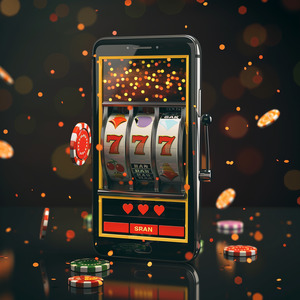
When it comes to online slots, one of the most important—but often misunderstood—factors is volatility. Also known as variance, volatility describes Slot88 the risk level and payout behavior of a slot game. High volatility slots tend to offer bigger payouts but less frequently, while low volatility slots give smaller, more regular wins. Choosing between the two depends largely on your playing style, budget, and appetite for risk. But when it comes to the question of which pays better, the answer is more nuanced than just “high” or “low.” Let’s break it down.
1. What Is Slot Volatility?
Volatility is a measure of how a slot game pays out over time. A high volatility slot has long dry spells with the potential for big wins, while a low volatility slot delivers frequent, smaller payouts that keep the balance ticking over. Medium volatility slots offer a balance between the two. Understanding this helps you manage your bankroll and expectations. For instance, games like Dead or Alive 2 and Money Train 4 are known for high variance and massive payouts, while titles like Starburst or Blood Suckers are loved for their consistent small wins.
2. High Volatility Slots: Big Wins, Bigger Risks
High volatility slots are designed for players who are willing to take bigger risks for the chance at higher rewards. These games often feature jackpots, massive multipliers, and exciting bonus rounds—but they can go dozens of spins without a significant win. Patience and a decent-sized bankroll are essential. If you’re someone who enjoys chasing large payouts and can handle swings in your balance, high volatility games might be your go-to. While the win frequency is low, the payout potential—sometimes up to 100,000x your stake—can be life-changing.
3. Low Volatility Slots: Steady Wins and Longer Play
In contrast, low volatility slots offer more frequent wins, making them ideal for casual players, beginners, or those who enjoy longer gaming sessions without high financial risk. These games tend to have simpler bonus features and lower max win potential. You won’t see 10,000x wins, but you’re also unlikely to experience long losing streaks. Low variance slots are perfect for wagering bonus money or fulfilling playthrough requirements. Titles like Aloha! Cluster Pays and Twin Spin exemplify the smooth, steady payout structure that appeals to risk-averse players.
4. Which Pays Better—High or Low Volatility?
The truth is: neither volatility type “pays better” in the long run, because both are designed with a set RTP (Return to Player) percentage. A high volatility slot with a 96% RTP and a low volatility slot with the same RTP theoretically return the same amount over time. However, how they pay differs significantly. High volatility slots offer a chance to hit it big but come with more variance and risk. Low volatility slots give you more consistent returns, but with limited potential for massive payouts. If your goal is entertainment and steady play, low variance pays better. If you’re looking for a thrill and willing to take risks, high variance could be more rewarding—if you strike it lucky.
5. Bankroll Strategy and Volatility
Your choice of volatility should match your bankroll management strategy. High volatility games require a larger bankroll to withstand dry spells and fully explore bonus features. Betting small on these slots might mean missing out on their full potential, especially if the bonus rounds are difficult to trigger. In contrast, low volatility slots are more forgiving on smaller budgets, allowing for longer sessions and consistent engagement. Players who understand this relationship between volatility and bankroll tend to enjoy a more sustainable gambling experience.
6. Finding the Right Fit for You
Ultimately, the best-paying slot for you depends on what you’re looking for in a game. If you enjoy suspense, adrenaline, and the chance of hitting a massive jackpot, high volatility slots are worth exploring. If you prefer steady progress, longer play sessions, and lower risk, low volatility games will serve you better. Some players even rotate between both, depending on their mood and budget. Fortunately, most reputable casinos allow you to test slots in demo mode, so you can get a feel for their volatility before committing real money.
Conclusion
There’s no one-size-fits-all answer to which volatility level pays better—it depends on how you define “better.” High volatility slots may yield explosive wins but come with risk and unpredictability. Low volatility slots provide consistent action and fewer surprises. Understanding these dynamics and aligning them with your playstyle and bankroll can lead to a more enjoyable and potentially rewarding slot experience. So, before you spin, take a moment to consider: do you want the thrill of the chase or the comfort of consistency?
Ask ChatGPT